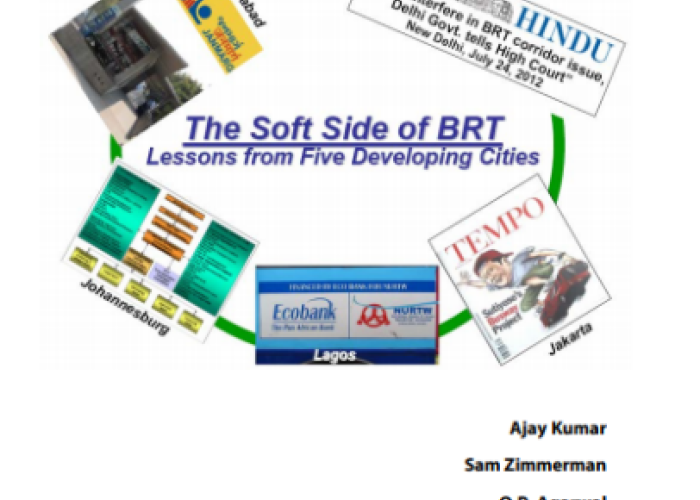The Soft Side of BRT - World Bank

The Soft Side of BRT: Lessons from Five Developing Cities Lagos Johannesburg Jakarta Ahmedabad Delhi World Bank
- SUMP
- Mass Public Transport
Tools & Methodologies
CHEVRE Antoine
Transport Team Leader
The Soft Side of BRT: Lessons from Five Developing Cities Lagos Johannesburg Jakarta Ahmedabad Delhi World Bank
This study has been undertaken to document BRT case studies in terms of the political setting; institutions and governance; public involvement and communications; and service, operations, management, and planning as well as the relationship of these aspects to investment performance. It is acknowledged that successful implementation and operation of BRT systems often involves such non-physical aspects as leadership, communications, organizational structure, service planning, and operating practices rather than the design of transitways, stations, terminals, and vehicles. This paper evaluates a sample of BRT systems, focusing on the softer issues that contribute to the systems’ successes and their failings. The study will help decision makers and practitioners, including those contemplating new BRT systems, understand some of the more difficult issues confronted in the challenging environments of developing cities. In examining topics addressed only rarely in the literature, it adds to the current body of knowledge, which has tended to focus on the “hard” engineering aspects of BRT. The study is based on an extensive review of the literature, interviews with stakeholders, and analysis of primary data to document lessons from the BRT experience in Jakarta, Indonesia; Lagos, Nigeria; Johannesburg, South Africa; and Delhi and Ahmedabad, India. The paper spans two continents, Asia and Africa, and deliberately omits case studies from Latin America, as this is a region where BRT applications have been well documented and implemented in similar environments. Cities in other parts of the world have tended to replicate the Latin American model to varying degrees in different political, institutional, and operational environments. The objective is to learn from the variations.
Background information and context for the paper highlight the need to expand the size and im-prove the quality of conventional road-based public transport systems. A synthesis of the case stud-ies and key findings is followed by detailed case studies in the annex. Each case study is approached as follows: